Most hospitals will give a short talk on what to expect when breastfeeding during your pregnancy. Some may even provide lactation experts to show you the ropes the first few days after your delivery.
For just about every new mom and baby, the first attempts at breastfeeding are haphazard and hapless, at best.
But proper positioning is essential in helping your newborn latch on the right way, as well as preventing nipple soreness and other breastfeeding problem like engorgement, mastitis.
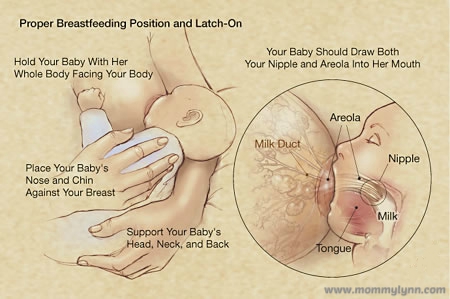
There are a few positions you may want to try but the key here is to find the one that works best for you. Don’t panic if it doesn’t work in the first try.
It’s all about practice with some trial and error involved as well because all babies are different. Here are 6 common positions you may want to try out.
1) Cradle Hold
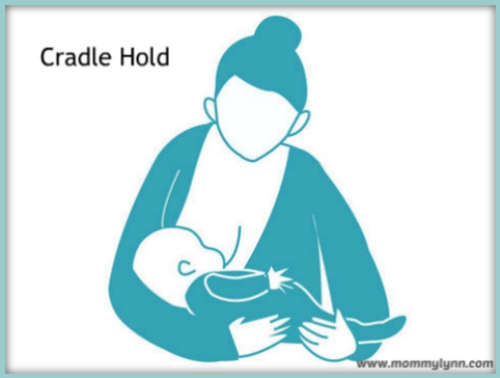
This classic breastfeeding position requires you to cradle your baby’s head with the crook of your arm.
Hold baby in your lap so that he/she is lying on his/her side with her face, stomach, and knees facing you. Tuck baby’s lower arm under your own.
Use your forearm and hands to support his/her neck, spine, and bottom. Secure baby’s knees against your body and he/she should lie horizontally, or at a slight angle.
Cup your breast with your other hand, placing your thumb above your nipple and areola at the spot where your baby’s nose will touch your breast.
Your index finger should be at the spot where your baby’s chin will make contact with the breast.
Lightly compress your breast so that the nipple points slightly towards your baby’s nose. Baby is now ready to latch.
2) Crossover Hold
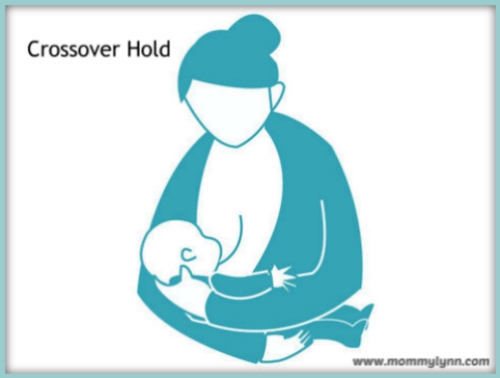
Hold your baby’s head with the hand opposite to the breast you will be nursing from (i.e. if nursing from the right breast, hold baby’s head with your left hand).
Rest your wrist between your baby’s shoulder blades, your thumb behind one ear, your other fingers behind the other ear.
Using your free hand, cup your breast as you would for the cradle hold.
3) Football Hold
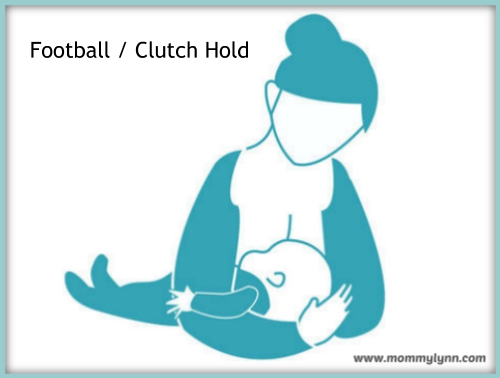
Also known as the clutch hold. In this position, you would need to tuck your baby under your arm just like a football.
Position your baby at your side, facing you with his/her nose level with your nipples and his feet pointing towards your back.
Rest arm on a pillow in your lap or beside and support baby’s shoulder, neck and head with your hand. Use your forearm to support his/her lower back.
This position is especially useful if you have:
-
had a C-section and want to avoid placing your baby against your abdomen
-
large breasts
-
a small or premature baby
-
twins
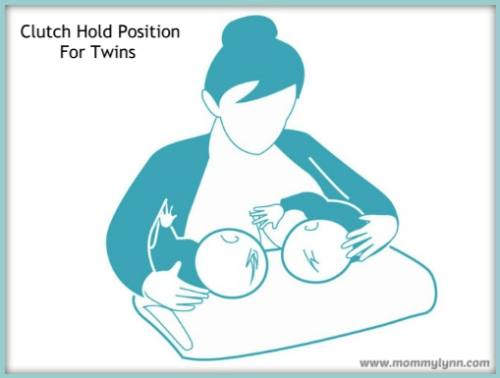
4) Laid-back Position
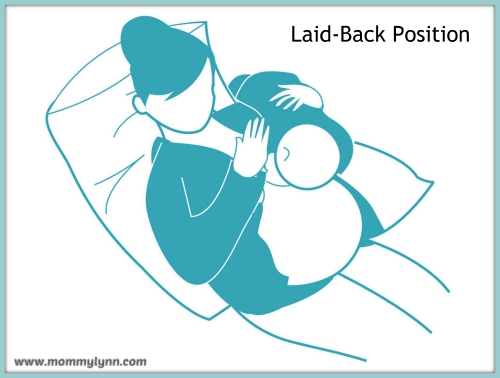
Lean back on a bed or couch, well supported by pillows, so that when you put your baby tummy-to-tummy onto your body, head near your breast, gravity will keep him/her molded to you.
Your baby can rest on you in any direction, as long as the whole front of the body is against yours and he/she can reach your breast.
Your baby can naturally latch on in this position, or you can help by directing the nipple toward your little one’s mouth.
Once baby is set up at your breast, you don’t have to do much besides lie back and relax. This position can be particularly helpful for moms with smaller breast.
5) Side-lying Position
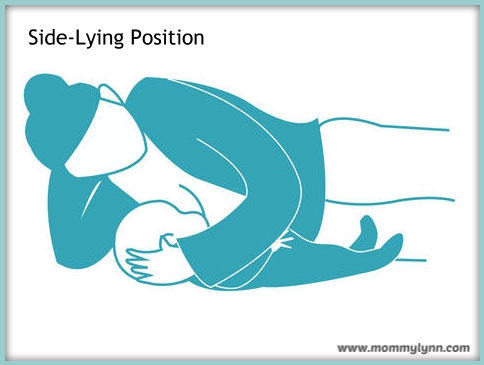
Both you and your baby should lie on your sides, tummy-to-tummy. Place some pillows behind your back for support.
Now with baby facing you, draw him/her close and cradle his/her head with the hand of your bottom arm and guide him/her to your nipples.
Use your hand on the side you are not lying on to cup your breast if you need to. You may want to use a small pillow or folded blanket to prop baby’s head so he/she can be closer to your breast.
This position is a good choice when you are breastfeeding in the middle of the night.
6) Koala Hold
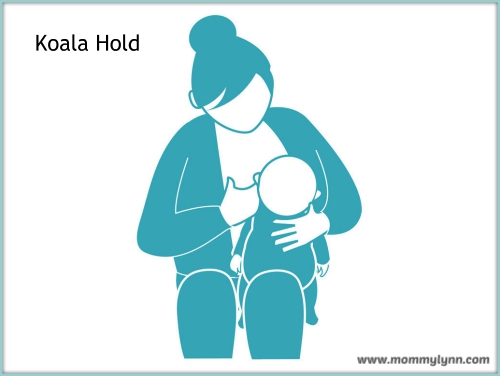
Simply sit in any upright position with your baby sat on your hip legs tucked around you like a koala or straddling your leg facing the breast, in a tummy-to-tummy cuddle position.
Sit baby on a pillow or folded blanket if your baby need to be raised higher to the breast so his/her nose is in line with your nipple.
This position works well for older babies who can support their own head and wish to have a better view of their surroundings as they nurse.
In order to see whether your baby is feeding well at the breast, the following are few signs of it:
-
baby has a large mouthful of breast not just the nipple
-
baby’s lower lip is curled back
-
baby’s nose is usually clear of the breast
-
baby’s chin usually pressing the breast
-
you can see more areola above the baby’s mouth than below
-
baby has full rounded cheeks
-
baby sucking rhythmically with pauses and swallows
-
feeding should be painless
-
contented baby who stays on the breast


Leave A Comment